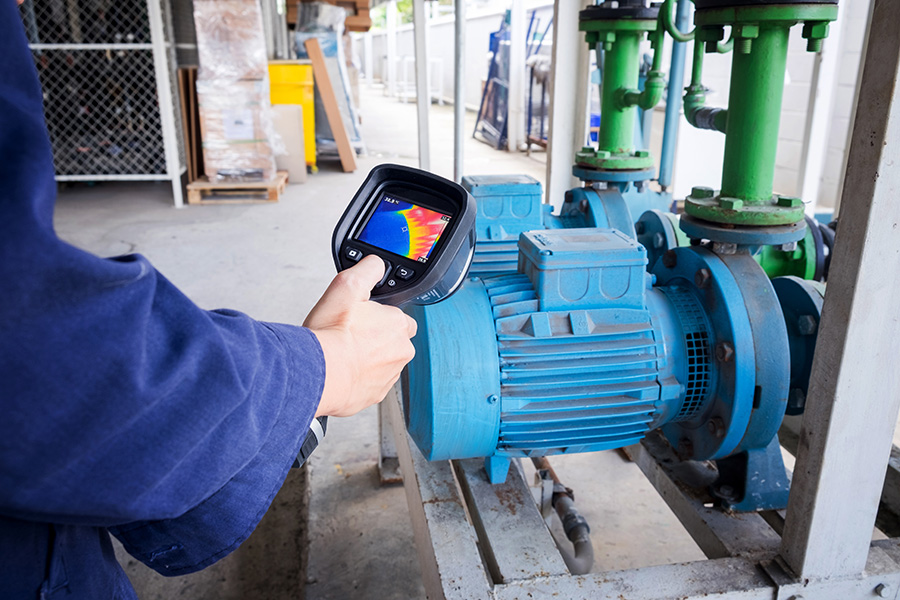Six Steps to a Successful Storeroom
Using these elements as a foundation enables the purchasing system for MRO parts to function well. Tracking a part through the purchasing process can illustrate the way the entire inventory-management system should work.
First, once a technician locates the correct part in the storeroom, accountability comes into play. Nothing leaves the storeroom unaccounted for. When a technician checks the part out, the CMMS assigns it to a work order, a piece of equipment, a cost center, an employee, a contractor or a department. This step tracks the part so it can be back-charged to the proper account.
An effective CMMS produces a report showing the costs for parts accumulated by the various entities using the storeroom, which receive charges for the storeroom items they use via internal accounting procedures. Only the user pays.
Second, once the CMMS assigns a charge-back code to the part, the CMMS automatically tracks all aspects of the transaction. This step is an essential element when calculating equipment life-cycle costs. The CMMS also automatically reduces the quantity in the storeroom by the number of parts checked out.
Third, when the part quantity reaches or falls below the predetermined minimum number on hand, most CMMS applications produce a report indicating the operator must reorder the parts. Some applications generate a purchase requisition, grouping parts by vendor.
The requisition contains all necessary part and vendor information taken from the database. It also contains substitute part information as needed. The operator approves the requisition and forwards it to the purchasing department. Some CMMS packages generate purchase orders directly from these requisitions.
Storeroom operators should have authority to reorder all critical parts and standard storeroom stock items. Unnecessary and potentially costly delays can result when requisitions sit on a desk waiting for approval or have to make the rounds for signatures.
Some CMMS applications also have electronic data-interface capability, which instantly transmits a requisition to a vendor. But purchasing agreements with maximum spending limits must be in place for this step to happen.
Fourth, determine the frequency of purchase-order generation. How often the MRO purchasing agent receives purchase requisitions varies. Organizations might deliver them daily, twice or three times a week, or only on Fridays for parts used during the previous week. Factors that include parts-database accuracy, lead times, and purchasing-department workloads determine the frequency.
Companies determine the frequency that suits them best, but until the storeroom and its purchasing functions are well established and stock levels are stable, requisitions should be delivered daily.
Based on criticality or need, the MRO parts purchasing agent either will place the order or consolidate it with other orders for the same vendor. Parts-delivery and lead times established during the inventory-database setup will help eliminate emergency air freight, and overnight deliveries are eliminated for items that normally are stocked.
Fifth, the vendor fills the order and ships or delivers the parts to the facility. The receiving clerk compares the packing slip with the purchase order to determine if the part received matches the part ordered or is an acceptable substitute. If everything matches, the storeroom operator will receive the part, the packing slip, and a copy of the purchase order.
The receiving clerk processes the paperwork in accordance with department procedures and handles any discrepancies, shortages, or damages.
Sixth and finally, when the part arrives at the storeroom, the operator compares the packing slip to the purchase order and part to ensure the order is correct and complete. If the part requires a text or bar-code label, the operator generates and applies it.
The storeroom operator stores the part at the back of the line in the usual storage location, following the “first in, first out” procedure that ensures proper stock rotation. The operator then updates the CMMS’s purchase order to show the parts have arrived and the purchase order is complete.
The CMMS also automatically adjusts the quantity-on-hand field in the inventory module to reflect the additional parts received. The CMMS closes the order, which becomes part of the purchasing history.
If items are on backorder or if a partial shipment arrives, the purchase order remains open, and the storeroom operator should retain a copy of the packing slip and purchase order to serve as a reminder to check on the arrival of the delayed parts.
Lean, reliable results
These six steps will produce a successful MRO storeroom. This purchasing procedure also works for parts requiring off-site rebuilding. Whether the part is a motor, gearbox, pump, air or hydraulic cylinder, circuit board, or electronic drive, the procedure for getting it repaired is as simple, practical, and efficient as ordering any other part.
Once these purchasing functions become operational, the facility will begin to see an increase in equipment uptime, directly related to the reduction in parts-related equipment downtime.
The storeroom also will become a leaner operation. Overall operating and purchasing-related costs, along with the dollar value of inventory parts and supplies, will decrease.
Finally, the storeroom also will become more reliable because it has the right parts in the right quantities when technicians need them. In short, its stability, efficiency and effectiveness provide the essential support all maintenance departments need.
Frank Murphy, Certified Plant Maintenance Manager (CPMM), is the founder and president of Inventory Management Services Inc. in Greenville, S.C. The company’s consulting approach changes MRO parts storerooms from reactive operations to proactive operations.
Related Topics:












